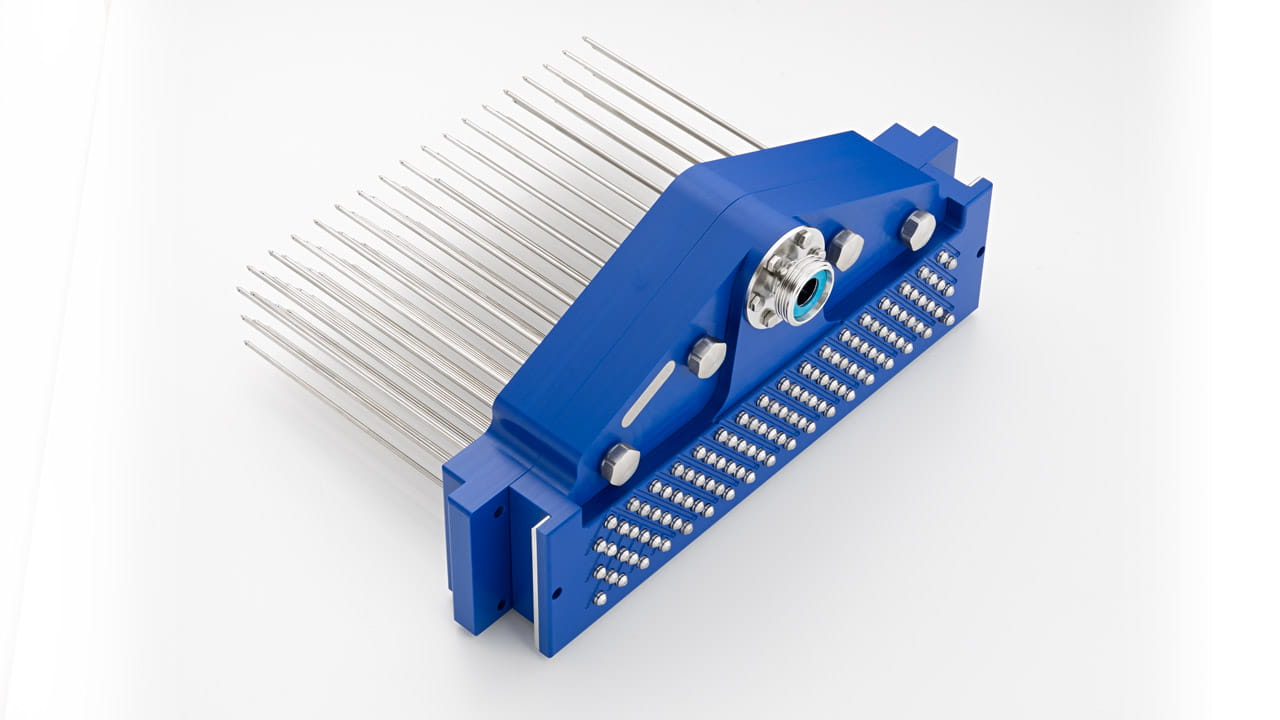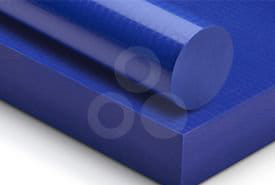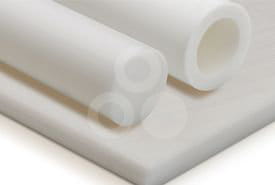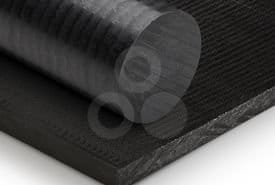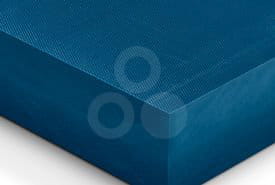Needleblock for meat processing
a case from Günther Maschinenbau GmbH
To ensure food safety, not only components which come into direct contact with food need to be made of materials which comply with food contact regulations. This system is an example for the curing of meat made with salt, brine and a small quantity of water - according to the maximum quantity permitted by the regulation. The application is a component of a fully automated system developed to enhance flavour and shelf life by saline injection using needles.
The block
The needles
Blue acetal for food to comply with all requirements
TECAFORM AH can be processed faster and more accurately, meaning less rework is necessary. In contrast, not all forms of PE can be processed, resulting in certain restrictions on procurement. Selecting the thermoplastic material TECAFORM AH can thus cut processing costs. Another improvement is the use of TECAFORM AH blue, the acetal blue compliant with FDA and EU 10/2011 developed by Ensinger for food applications. Blue is not only a popular color in the food industry, it also significantly reduces the risk of plastic contamination in food because of its optically detectability. Blue is a strategy for detectability – optical detectability by the finishing line operator. TECAFORM AH blue, as the natural grade, is also chemically resistant to detergents.
After a training course for introduction of EU 10/2011, in cooperation with the customers, the needle block was the first application which was adapted for optical detection. A prototype was developed and, after successful tests, customers were encouraged to convert more components.
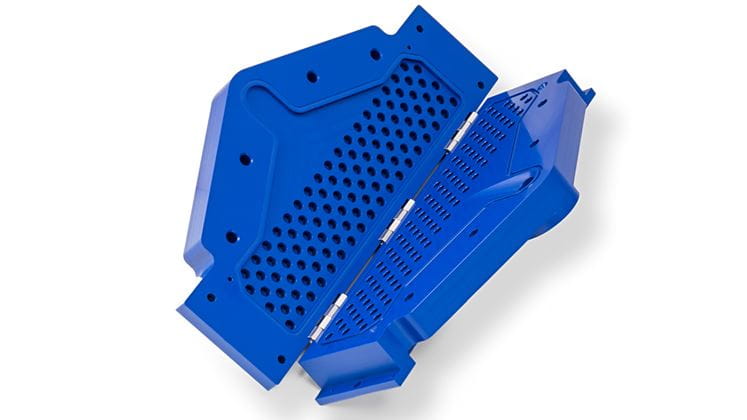 Needle block made of TECAFORM AH blue
Needle block made of TECAFORM AH blue
Acetal materials for food APPLICATIONS
Acetal is one of the most commonly used thermoplastics in the food industry thanks to its versatile properties and light weight. Find our main acetal products below or see our complete TECAFORM AH (POM-C) range here.
